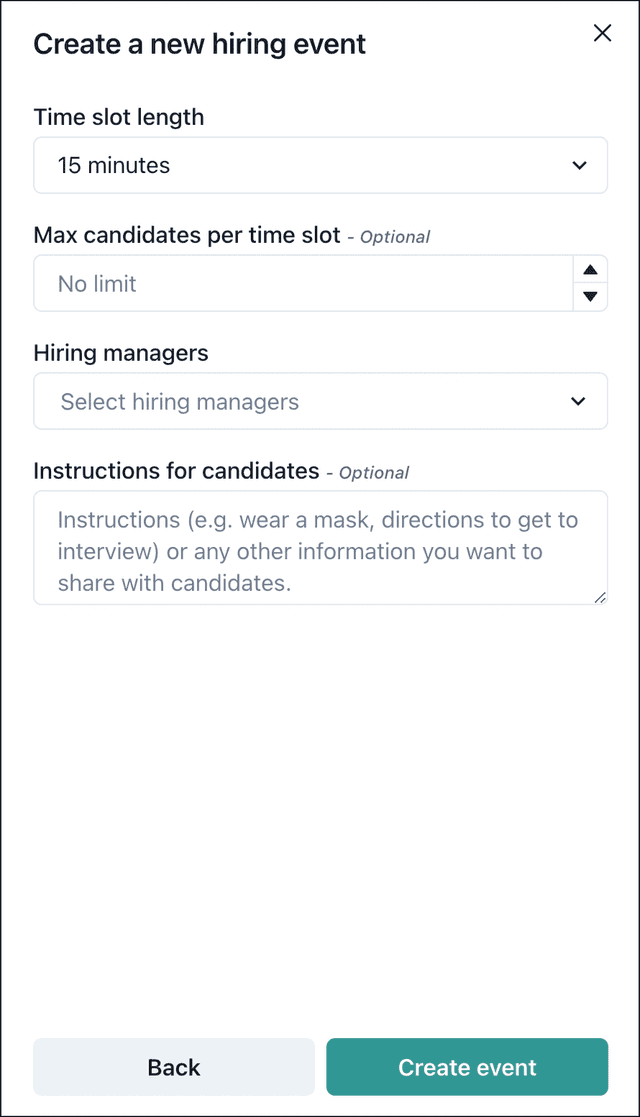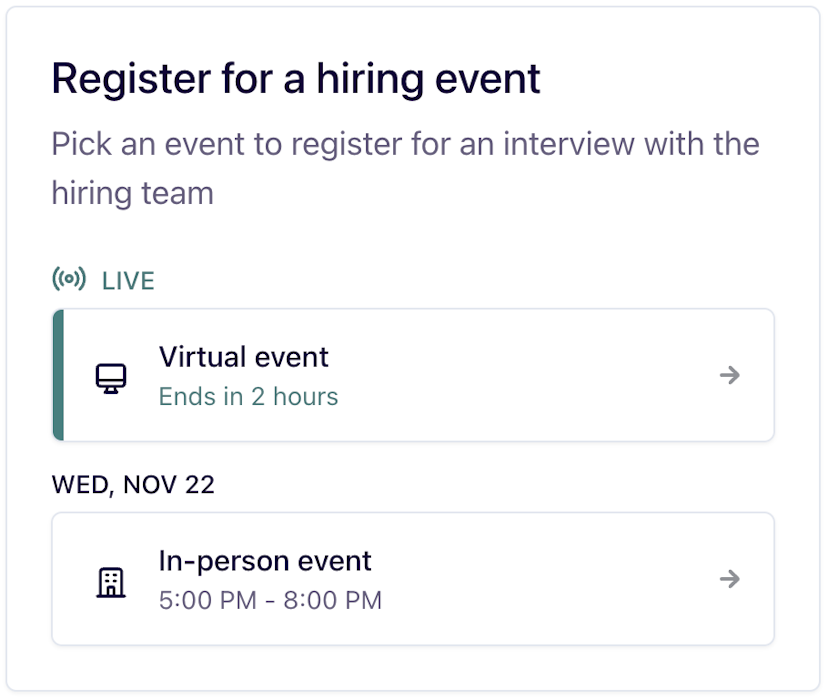Leverage Withe's hiring event platform
Streamline your seasonal and high-volume hiring process and hit your hiring targets.
Interview scheduling — it’s not a fun process, is it?
In fact, what may seem like an innocuous part of the interview process can actually have a big impact on candidates and recruiters alike. On the one hand, a clunky interview scheduling process can turn candidates off — and that’s a costly risk in the current talent market. Meanwhile, if recruiters don’t have an efficient scheduling process, they can miss out from spending time on more strategic tasks that move the needle forward for their team.
So, what does an efficient and effective interview scheduling process look like? We’ll explore some best practices below.
Leverage Withe's hiring event platform
Streamline your seasonal and high-volume hiring process and hit your hiring targets.
Make it as easy as possible for candidates
Today, the candidate experience is more important than ever. For the interview scheduling process, you can prioritize the candidate experience in a few ways:
- Give as much information as possible up front. Whether it’s in job posting or in the registration process, give candidates all the details they need to be successful.
- Avoid too much back and forth to schedule the interview.
- Allow candidates to self-serve and choose times that make sense for them, and have a calendar invite sent to them automatically.
- Make it easy for candidates to request accommodations so that they can have their needs met immediately from the beginning of the interview.
Proactively meeting candidate needs in the interview scheduling process will make them more likely to attend the interview and pursue the opportunity.
Choose optimal times for your interviewers
The interviewer experience is another important part of the equation here. Check in with your team to get a sense of when they prefer to interview. For instance, you may have half the team that is more focused and alert in the morning, and another half that prefers to interview later in the day, after they have completed their other tasks. This can help you determine when to schedule your interview events, and determine how to distribute the interview load.
Collect and review interview data
Use your recruiting tools and software to gather as much interview data as possible. Having this information to hand will help you understand how many interviews you’re able to run at a time, how many no-shows you tend to deal with, and where your scheduling process could be optimized. Not only will this help you address issues, it will also help you set a baseline so you can set intentional goals around your interview metrics.
Introduce automation wherever possible
Part of the tediousness of interview scheduling is the back and forth that happens between candidates, recruiters, and hiring managers. Adopting a tool that automates parts of the process and introduces self-serve capabilities for candidates can reduce a lot of the administrative burden — not to mention eliminating miscommunication.
Your technology should also integrate with your applicant tracking system, so that there are no gaps in your data collection. Ideally, it should also have attribution capabilities so you can identify which of your candidate sources are performing best.
As you introduce automation, however, don’t forget to keep the communication channels open in case candidates have questions. Automation should never come at the expense of human connection or accessibility.
Withe's hiring event platform helps recruiters streamline the interview scheduling process
Scheduling interviews in Withe
When it comes to hiring events, scheduling interviews can quickly become time intensive — especially if you’re hoping to meet with a large number of candidates at a time. Withe’s hiring event platform solves this problem by letting recruiters set up time slots that candidates can choose from when registering for a hiring event.
Once the recruiter creates a job posting in Withe, they can then set up hiring events from within the platform. In the set up window, they can select the event format, time zone, start time, and end time. This will be the hiring window within which candidates can select interview slots.

In the second set-up window, recruiters can:
- Choose how long they want interviews to be
- Set the maximum number of candidates per time slot (which will depend on the number of available recruiters and typical no-show rates)
- Choose whether to request an resume
- Assign hiring managers (for internal tracking and accountability purposes)
- Share instructions for the candidate

Once all the details are set, the recruiter can share the job posting as an external link, which will also have a hiring event registration window that candidates can sign up with directly. Here, candidates are able to choose a time slot and make specific accommodation requests and Withe will track the sources that candidates applied from.

Then, on the day of the hiring event, recruiters will automatically have their roster of candidates to interview.
Interview scheduling made simple
Recruiters have more pressure than ever to source and attract high-quality candidates. A big part of getting this right is ensuring that every part of the recruitment process — including interview scheduling — is as seamless and user friendly as possible. This not only makes the candidate’s life easier, it also reduces the burden on your recruiting team and allows them to focus on more strategic initiatives (like improving the candidate experience or reducing interview bias).
Withe’s hiring events platform helps recruiters streamline the interview scheduling process. Learn more about it on our homepage.




